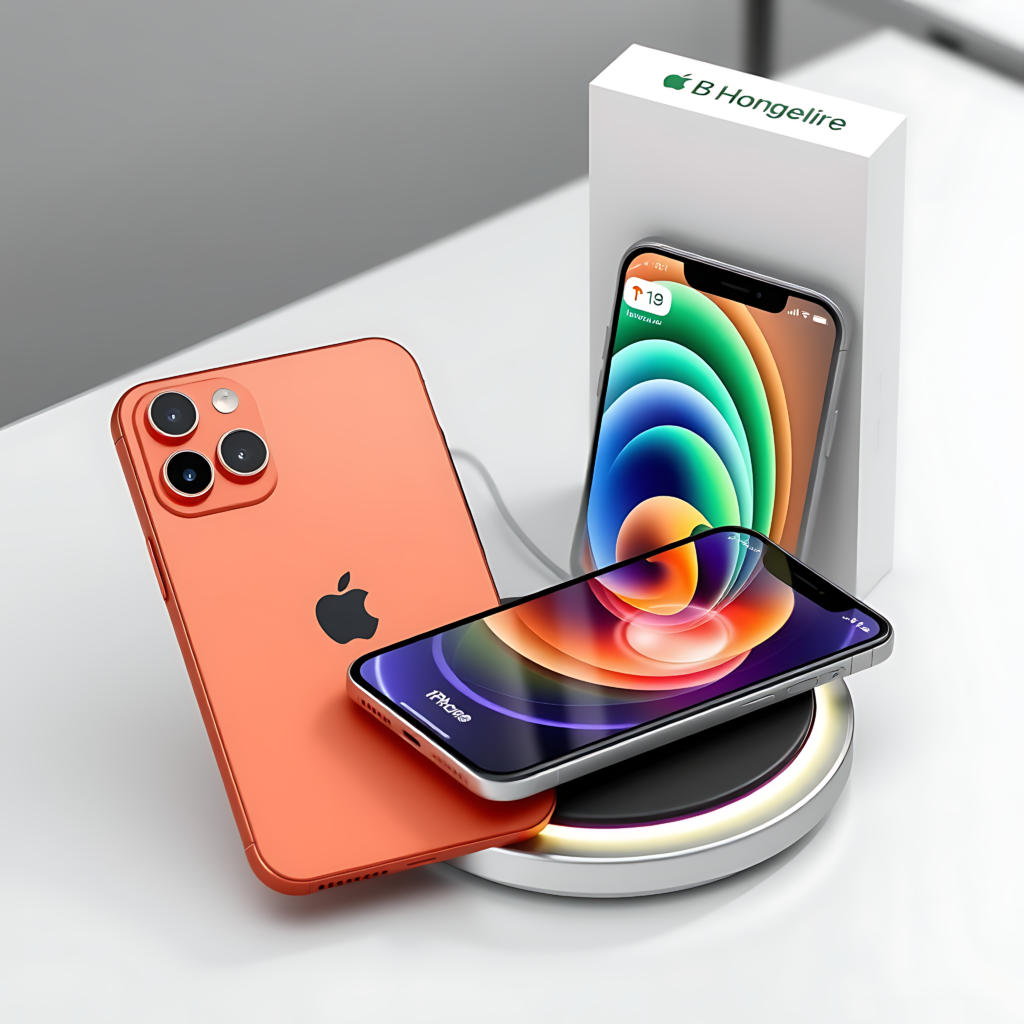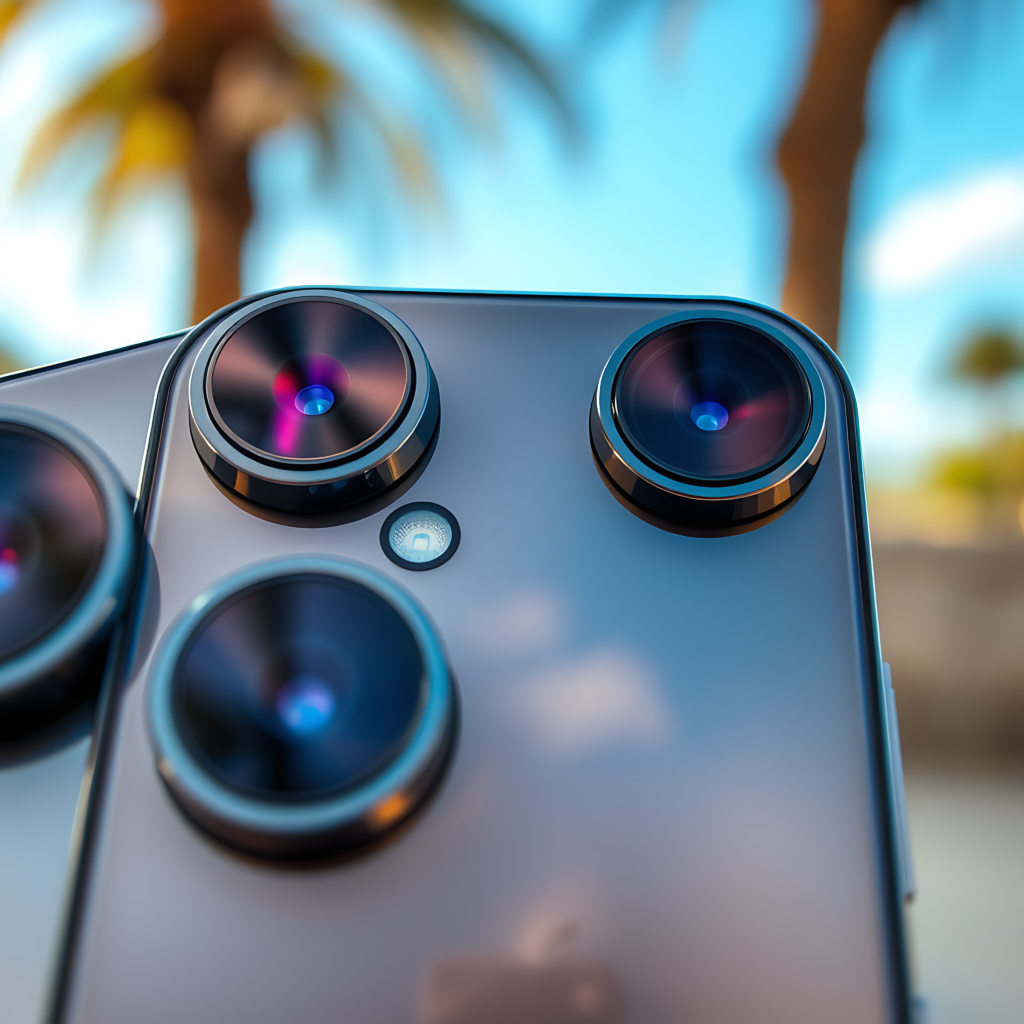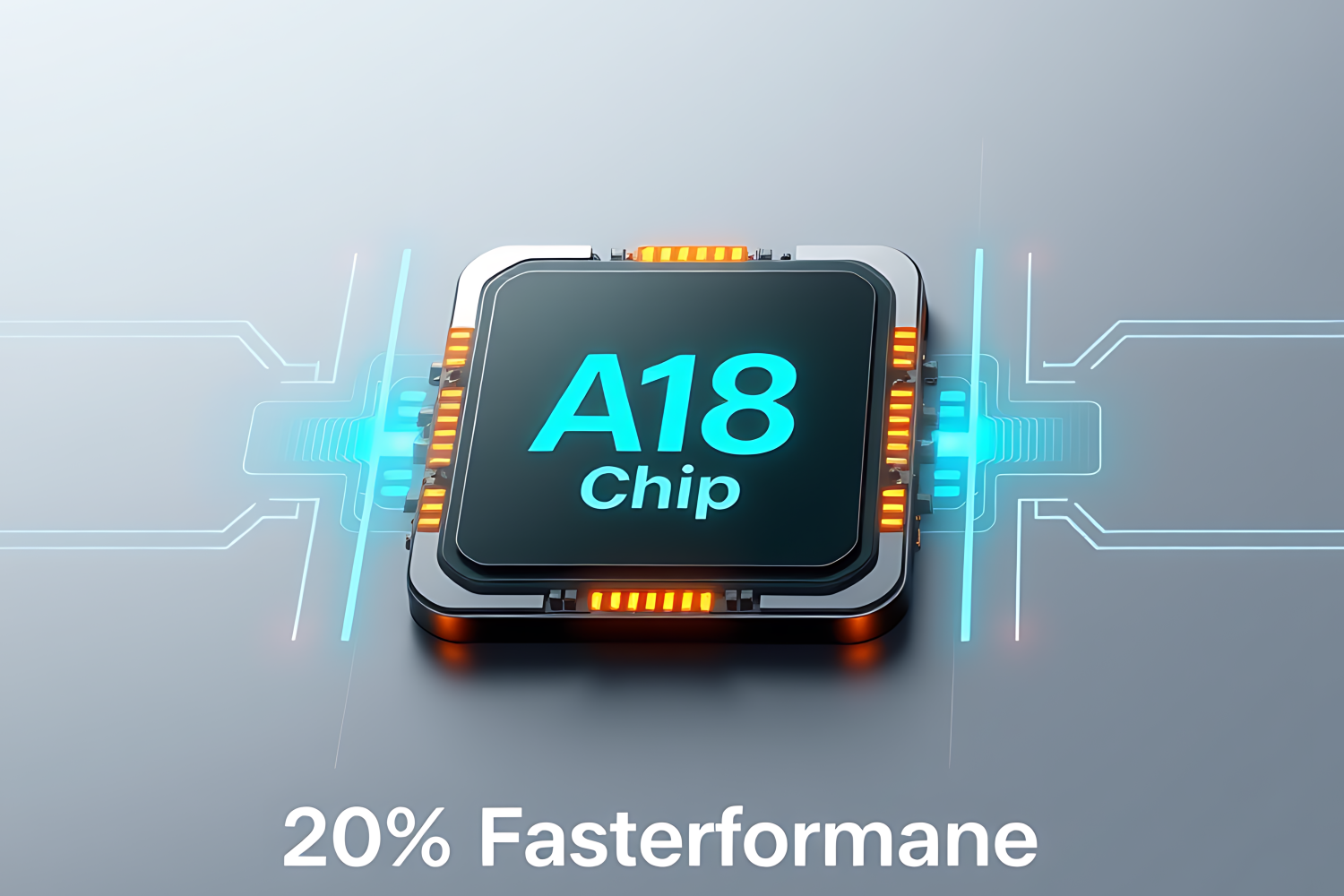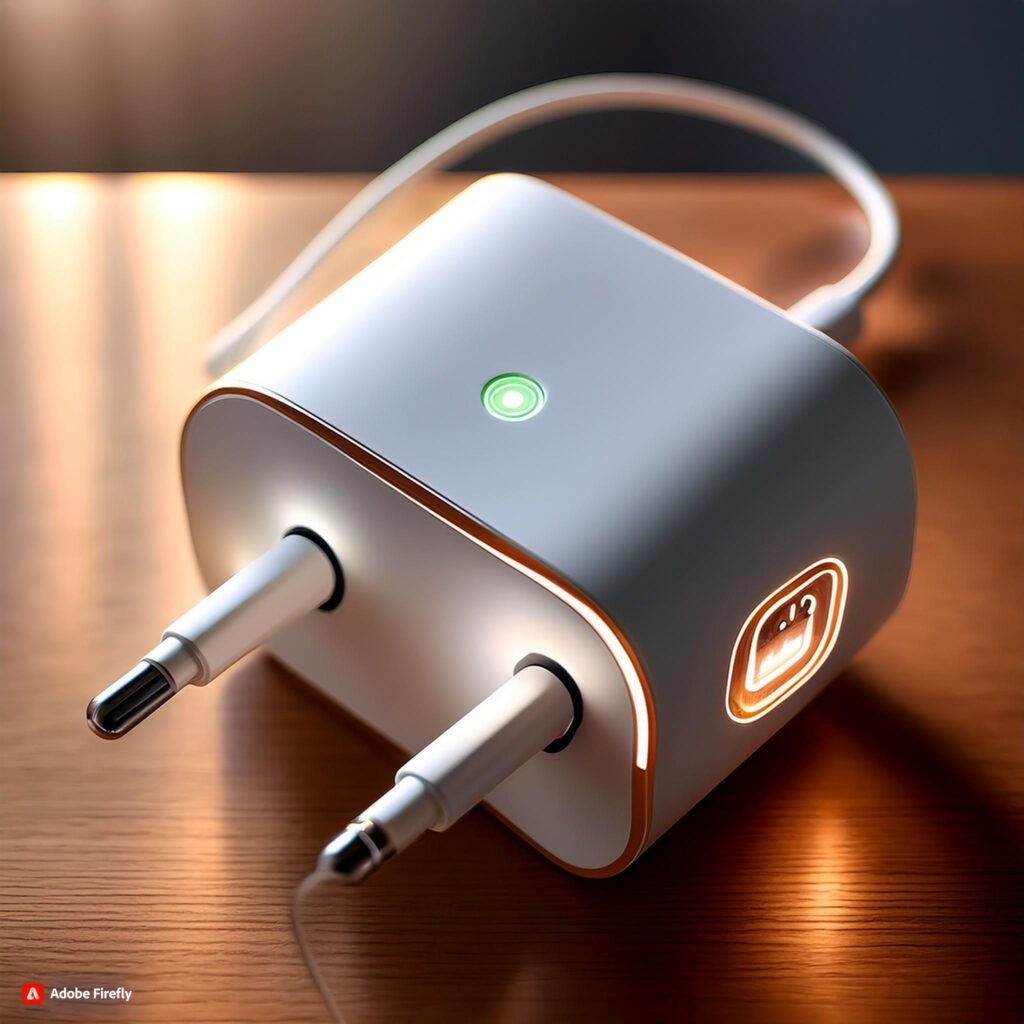Introduction
The evolution of the iPhone has been nothing short of remarkable. From the groundbreaking original iPhone unveiled by Steve Jobs in 2007 to today’s cutting-edge devices, Apple’s iconic smartphone has continually pushed the boundaries of mobile technology. With each new iteration, the iPhone has introduced innovations that have shaped the entire industry and redefined our relationship with technology.

Now, with the highly anticipated release of the iPhone 17, Apple once again aims to revolutionize the smartphone landscape. Building on the successes of its predecessors while introducing bold new features, the iPhone 17 represents a significant milestone in Apple’s relentless pursuit of excellence.
In this comprehensive exploration of the iPhone 17, we’ll delve deep into every aspect of this groundbreaking device. From its stunning design and advanced display technology to its powerful performance capabilities and cutting-edge camera systems, we’ll leave no stone unturned. We’ll also examine how the iPhone 17 fits into Apple’s broader ecosystem, its impact on the competitive smartphone market, and what it signals for the future of mobile technology.
Whether you’re a die-hard Apple fan, a tech enthusiast, or simply curious about the latest advancements in smartphones, this in-depth look at the iPhone 17 will provide valuable insights into one of the most important consumer technology products of our time. So, let’s embark on this journey to uncover everything there is to know about Apple’s latest marvel – the iPhone 17.
Design and Build Quality
Aesthetic Evolution
The iPhone 17 represents a bold step forward in Apple’s design philosophy, striking a delicate balance between familiar elegance and futuristic innovation. At first glance, the device exudes a sense of refined sophistication that longtime iPhone users will instantly recognize. However, closer inspection reveals subtle yet significant changes that set the iPhone 17 apart from its predecessors.
The most noticeable design shift is the further reduction of the display notch, which has been a point of contention since its introduction with the iPhone X. In the iPhone 17, Apple has managed to shrink the notch to its smallest size yet, integrating it seamlessly into the top edge of the device. This change not only enhances the aesthetic appeal but also increases the usable screen real estate, providing a more immersive viewing experience.
The device’s edges have been subtly reshaped, featuring a slightly more rounded profile that improves ergonomics without sacrificing the iPhone’s iconic look. This refinement makes the iPhone 17 more comfortable to hold for extended periods, addressing a common criticism of recent models with sharper edges.
Materials and Construction
Apple has long been at the forefront of using premium materials in smartphone construction, and the iPhone 17 continues this tradition while introducing some exciting innovations. The device’s frame is crafted from a new, proprietary alloy that Apple claims is 20% stronger than the stainless steel used in previous Pro models, yet 15% lighter. This advancement allows for improved durability without adding bulk to the device.
The front and back of the iPhone 17 are protected by the latest iteration of Ceramic Shield, now in its fourth generation. This new formulation offers even greater protection against drops and scratches, further enhancing the device’s longevity. Apple has also introduced a new nano-coating technology that significantly reduces fingerprints and smudges on the glass surfaces, keeping the device looking pristine with minimal maintenance.

Color Options
Apple has expanded its color palette for the iPhone 17, offering a range of sophisticated and vibrant options to suit various tastes. The standard models are available in:
Midnight (black)
Starlight (white)
Product RED
Forest Green
Sapphire Blue
Sunset Orange
The Pro models feature a more premium finish with:
Graphite
Silver
Gold
Deep Purple
Emerald Green
Ocean Blue
These new color options are achieved through an advanced anodization process that creates deeper, more vibrant hues while maintaining the device’s premium feel.
Innovations in Design
Perhaps the most groundbreaking design feature of the iPhone 17 is the introduction of what Apple calls “Adaptive Edges.” This technology allows the sides of the device to change color or display information based on notifications, app usage, or user preferences. For example, the edges might glow subtly for incoming notifications or display a progress bar for downloads. This feature not only adds a new dimension of functionality but also personalizes the device in a way never before seen in smartphones.
Another notable design innovation is the integration of solar charging capabilities into the Apple logo on the back of the device. While not powerful enough to replace traditional charging methods, this feature can provide small amounts of power in emergency situations or extend battery life slightly during outdoor use.
The camera bump, a contentious design element in recent years, has been reimagined in the iPhone 17. Apple has managed to reduce its protrusion by developing thinner lens elements and a more efficient sensor layout. The result is a camera system that sits more flush with the device’s back, reducing wobble when placed on flat surfaces while maintaining the advanced imaging capabilities users expect.
Build Quality and Durability
Apple has further improved the iPhone’s resistance to water and dust, achieving an IP69K rating – the highest standard for protection against these elements. This means the iPhone 17 can withstand high-pressure, high-temperature jet sprays, making it more resilient in extreme conditions than ever before.
The device also features a new “self-healing” exterior coating. Minor scratches and scuffs on the back glass or frame can actually repair themselves over time, maintaining the device’s pristine appearance for longer. While not a solution for major damage, this innovation helps keep the iPhone 17 looking new with normal wear and tear.
In conclusion, the design and build quality of the iPhone 17 showcase Apple’s commitment to pushing the boundaries of what’s possible in smartphone construction. By combining refined aesthetics, cutting-edge materials, and innovative features like Adaptive Edges, Apple has created a device that’s not just a tool, but a piece of functional art. The iPhone 17’s design sets a new standard for the industry, balancing form and function in ways that will likely influence smartphone design for years to come.
Display Technology
The display has always been a centerpiece of the iPhone experience, and with the iPhone 17, Apple has once again raised the bar for smartphone screens. The advancements in display technology not only enhance visual quality but also introduce new functionalities that change how users interact with their devices.
Screen Size and Resolution
The iPhone 17 comes in three sizes:
iPhone 17: 6.1-inch display
iPhone 17 Plus: 6.7-inch display
iPhone 17 Pro: 6.1-inch display
iPhone 17 Pro Max: 6.8-inch display
All models feature Apple’s Super Retina XDR OLED technology, but the Pro models introduce what Apple calls “Ultra Retina XDR” displays. These screens offer an astonishing resolution of 3200 x 1800 pixels for the Pro and 3300 x 1872 for the Pro Max, resulting in pixel densities over 500 ppi. This level of detail makes individual pixels imperceptible to the human eye, creating images and text with unprecedented clarity and sharpness.
The standard iPhone 17 and 17 Plus models aren’t far behind, with resolutions of 2778 x 1284 and 3088 x 1440 respectively, maintaining the excellent visual quality users have come to expect from Apple’s displays.
Refresh Rate and ProMotion
Building on the success of ProMotion technology introduced in earlier models, the iPhone 17 takes adaptive refresh rates to new heights. All models now feature ProMotion displays, with the ability to scale from 1Hz to 165Hz. This expanded range allows for even smoother scrolling and more responsive touch interactions while also enabling more efficient power management during low-activity periods.
The Pro models introduce “Intelligent ProMotion,” which uses AI to predict user behavior and adjust the refresh rate proactively. For example, if the system detects that you’re about to start scrolling through a long document, it will ramp up the refresh rate in anticipation, providing an ultra-smooth experience from the moment you touch the screen.
Brightness and Contrast
The iPhone 17 pushes the boundaries of mobile display brightness. The standard models can reach a peak brightness of 1500 nits for HDR content, while the Pro models can hit an astounding 2500 nits in outdoor conditions. This level of brightness ensures excellent visibility even in direct sunlight, addressing a long-standing challenge for smartphone users.
Contrast ratios have also been improved, with Apple claiming a 2,500,000:1 contrast ratio for the Pro models. This enhancement results in deeper blacks and more vibrant colors, creating a more immersive viewing experience for everything from photos and videos to games and augmented reality applications.
Color Accuracy and Gamut
Color accuracy has long been a strength of iPhone displays, and the iPhone 17 takes this to new levels. The display covers 100% of the DCI-P3 wide color gamut and introduces support for the Rec. 2020 color space, offering an even wider range of colors. This expanded color capability is particularly beneficial for professional users working with high-end photography and videography.
Apple has also introduced “True Tone Pro” on the iPhone 17, an advanced version of its adaptive color temperature technology. This new system uses multiple sensors to adjust not just the white balance of the display but also its color saturation and contrast based on ambient lighting conditions, ensuring optimal visibility and reducing eye strain in any environment.
Always-On Display Enhancements
The Always-On Display feature, first introduced in the iPhone 14 Pro, has been significantly enhanced in the iPhone 17. The new “Dynamic Always-On” mode allows for more vibrant and informative lock screens without significantly impacting battery life. Users can now choose to display full-color album artwork for playing music, live sports scores, or even animated widgets on their lock screen.
The Pro models introduce “Ambient Awareness” to the Always-On Display. This feature uses the device’s sensors to detect when the phone is face-down, in a pocket, or in low-light conditions, automatically adjusting the display’s brightness or turning it off completely to save power.
Dynamic Island Improvements
The Dynamic Island, introduced with the iPhone 14 Pro, has evolved into an even more versatile and powerful interface element in the iPhone 17. Now present on all models, the Dynamic Island has been expanded to accommodate more types of information and interactions.
New APIs allow third-party developers to create custom, persistent widgets that live in the Dynamic Island, greatly expanding its utility. For example, users can now have live transit information, stock tickers, or sports scores constantly visible at the top of their screen.
Apple has also introduced “Dynamic Island Gestures,” allowing users to interact with the information displayed in the Dynamic Island through swipes and long-presses, providing quick access to relevant actions without needing to open the full app.
Durability and Protection
The iPhone 17’s display is protected by the most durable iteration of Ceramic Shield to date. Apple claims this new formulation is 50% more resistant to cracks and scratches compared to the previous generation. Additionally, Apple has introduced a new oleophobic coating that’s significantly more effective at repelling fingerprints and smudges, keeping the display cleaner with less maintenance.
For the Pro models, Apple has introduced “Sapphire Fusion,” a new display technology that integrates sapphire crystal elements into the glass structure. This hybrid approach offers the clarity and touch sensitivity of glass with the superior scratch resistance of sapphire, creating what Apple claims is the most durable smartphone display ever.
Eye Comfort and Health Features
Recognizing the increasing amount of time users spend looking at their devices, Apple has introduced several new features aimed at improving eye comfort and overall health:
Adaptive Blue Light Filter: This advanced version of Night Shift dynamically adjusts blue light emission based on time of day and ambient lighting conditions, potentially reducing eye strain and improving sleep patterns.
Flicker-Free Technology: The iPhone 17 uses advanced pulse-width modulation techniques to eliminate screen flickering at all brightness levels, reducing eye fatigue during extended use.
Vision Comfort Mode: This new setting optimizes contrast and color temperature for users with various forms of color blindness or visual impairments, improving accessibility.
Eye Tracking Reminders: Using the TrueDepth camera system, the iPhone 17 can detect prolonged periods of close-up viewing and remind users to take breaks or adjust their viewing distance to reduce eye strain.
Conclusion
The display technology in the iPhone 17 represents a significant leap forward, not just in terms of visual quality but also in functionality and user interaction. From the ultra-high resolution and advanced color management to innovative features like Dynamic Always-On and expanded Dynamic Island capabilities, the iPhone 17’s screen is a showcase of Apple’s commitment to pushing the boundaries of what’s possible in mobile displays.
These advancements don’t just improve the viewing experience; they fundamentally change how users interact with their devices, making information more accessible and interactions more intuitive. As screens continue to be our primary interface with the digital world, the innovations introduced in the iPhone 17 are likely to set new standards and expectations for the entire smartphone industry.

Performance and Hardware
The iPhone has long been at the forefront of mobile computing power, and the iPhone 17 continues this tradition with a suite of hardware improvements that push the boundaries of what’s possible in a smartphone. From its cutting-edge processor to its enhanced memory and storage options, the iPhone 17 is designed to handle the most demanding tasks with ease while also providing efficiency for everyday use.



A18 Bionic Chip
At the heart of the iPhone 17’s performance capabilities is the A18 Bionic chip. Built on a 3-nanometer process, this chip represents a significant leap forward in mobile processor technology. The A18 Bionic features:
6-core CPU: With two high-performance cores and four high-efficiency cores, the A18 delivers a 20% increase in processing speed compared to its predecessor.
5-core GPU: The graphics processing unit sees a 25% boost in performance, enabling more realistic gaming experiences and smoother AR applications.
18-core Neural Engine: Capable of performing up to 18 trillion operations per second, the enhanced Neural Engine powers advanced machine learning tasks and AI features throughout the system.
Advanced ISP: The image signal processor has been upgraded to handle the increased data from the new camera systems, enabling faster processing and more sophisticated computational photography.
Improved Energy Efficiency: Despite its increased power, the A18 Bionic is 30% more energy-efficient than the A17, contributing to improved battery life.
The A18 Bionic’s performance improvements are particularly noticeable in demanding tasks such as 4K video editing, complex AR applications, and high-end mobile gaming. It also enables new AI-driven features throughout iOS, from more accurate predictive text to real-time language translation without the need for an internet connection.
RAM and Memory Management
Apple has increased the RAM in all iPhone 17 models:
iPhone 17 and 17 Plus: 8GB RAM
iPhone 17 Pro and Pro Max: 12GB RAM
This boost in RAM allows for more apps to remain active in memory, resulting in faster app switching and improved multitasking performance. The Pro models’ 12GB of RAM particularly benefits power users who frequently work with large files or run multiple demanding apps simultaneously.
Apple has also introduced “Intelligent Memory Allocation,” a new feature that uses machine learning to predict which apps and data a user is likely to need next, preemptively loading them into RAM. This results in faster app launch times and a more responsive overall experience.
Storage Options
Recognizing the increasing storage needs of users, Apple has expanded the storage options for the iPhone 17:
iPhone 17 and 17 Plus: 128GB, 256GB, 512GB
iPhone 17 Pro and Pro Max: 256GB, 512GB, 1TB, 2TB
The introduction of a 2TB option for the Pro models is a game-changer for professionals who work with large media files or want to store extensive photo and video libraries directly on their devices.
Apple has also improved the speed of its internal storage, with read and write speeds up to 40% faster than the previous generation. This enhancement is particularly noticeable when working with large files or installing apps.
Thermal Management
To maintain peak performance over extended periods, Apple has redesigned the iPhone 17’s thermal management system. The new system features:
Vapor Chamber Cooling: A larger, more efficient vapor chamber helps dissipate heat more effectively during intensive tasks.
Graphene Heat Spreader: The use of graphene in key areas helps distribute heat more evenly across the device.
Adaptive Thermal Throttling: AI-driven algorithms adjust performance dynamically based on device temperature and usage patterns, optimizing the balance between performance and heat generation.
These improvements allow the iPhone 17 to maintain higher performance levels for longer periods, particularly beneficial for tasks like gaming or video rendering.
5G and Wireless Connectivity
The iPhone 17 features an upgraded 5G modem that supports more bands and offers improved energy efficiency. Key improvements include:
Expanded mmWave Support: More models now support mmWave 5G, offering ultra-fast speeds in supported areas.
Improved Carrier Aggregation: The ability to combine multiple 5G channels for faster speeds and more stable connections.
5G Standalone Support: Enables access to next-generation 5G networks that don’t rely on existing 4G infrastructure.
Wi-Fi 7 Support: The iPhone 17 is one of the first smartphones to support the Wi-Fi 7 standard, offering theoretical speeds up to 40 Gb


